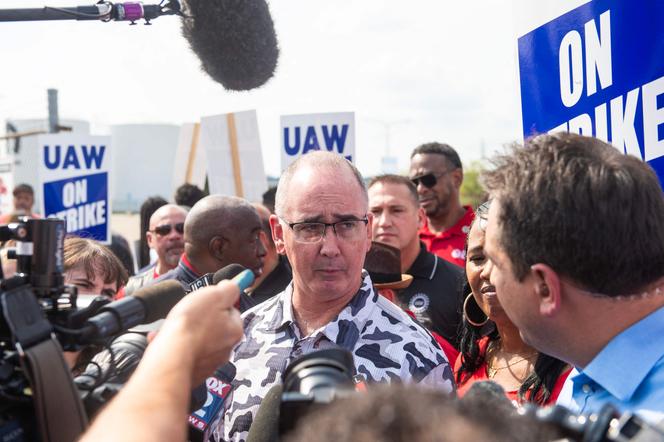


It's the strike that could change the face of America. For its supporters, it could mark a break with 40 years of wage stagnation (real median wages have risen by 9% since 1979, according to the Federal Reserve Bank of St. Louis) and unions' continued decline since Ronald Reagan fired over 11,000 air traffic controllers in 1981. For its critics, it could mark a return to the 1970s and lead to a further loss of competitiveness for three of Detroit's stalwarts − General Motors (GM), Ford and Stellantis (ex-Fiat Chrysler) − which collapsed during the Great Recession of 2009 and missed out on the electric vehicle (EV) revolution started by Tesla.
For now, the United Auto Workers (UAW) union is in the driver's seat, with the strike being supported by 75% of Americans, according to a Gallup poll. On Friday, September 22, in a Facebook address, Shawn Fain, the UAW's new leader (elected in the winter of 2022) and a progressive electrician, took stock of the state of negotiations after a week of walkouts. The walkout targeted three plants, one per manufacturer, including Ford's in Wayne, Michigan, some 40 kilometers west of Detroit.
The workers in the picket line had their eyes glued to their smartphones when a sudden loud cry came from the crowd: The movement would not spread to Ford, while 38 additional sites in 20 states would cease work from midday at parts plants at General Motors and Stellantis. "We still have serious issues to work through, but we do want to recognize that Ford is showing that they're serious about reaching a deal; at GM and Stellantis, it's a different story," announced Fain, 54, to the 146,000 union members of the Big Three.
Politically, this means that Ford gave in on numerous points, including accounting for inflation and the end of the wage scale that was very unfavorable to new recruits. But it also means that the UAW has successfully driven a wedge between the three automakers and that the onus is now on GM and Stellantis.
At the White House, Joe Biden, who claims to be the "most pro-union" president in history, decided to get even more involved. "Tuesday [September 26], I'll go to Michigan to join the picket line and stand in solidarity with the men and women of UAW as they fight for a fair share of the value they helped create," Biden announced Friday on X (formerly Twitter). "It's time for a win-win agreement that keeps American auto manufacturing thriving with well-paid UAW jobs."
Tuesday, I’ll go to Michigan to join the picket line and stand in solidarity with the men and women of UAW as they fight for a fair share of the value they helped create.
— President Biden (@POTUS) September 22, 2023
It’s time for a win-win agreement that keeps American auto manufacturing thriving with well-paid UAW jobs.
The Democratic leader has taken up the strikers' cause since the start of the dispute a week earlier: "Record corporate profits mean record contracts for the UAW," he declared. The president had taken a risk, as a strike that lasts too long could plunge the Midwest into recession, or boost inflation by creating new bottlenecks in the economy.
You have 75.75% of this article left to read. The rest is for subscribers only.
